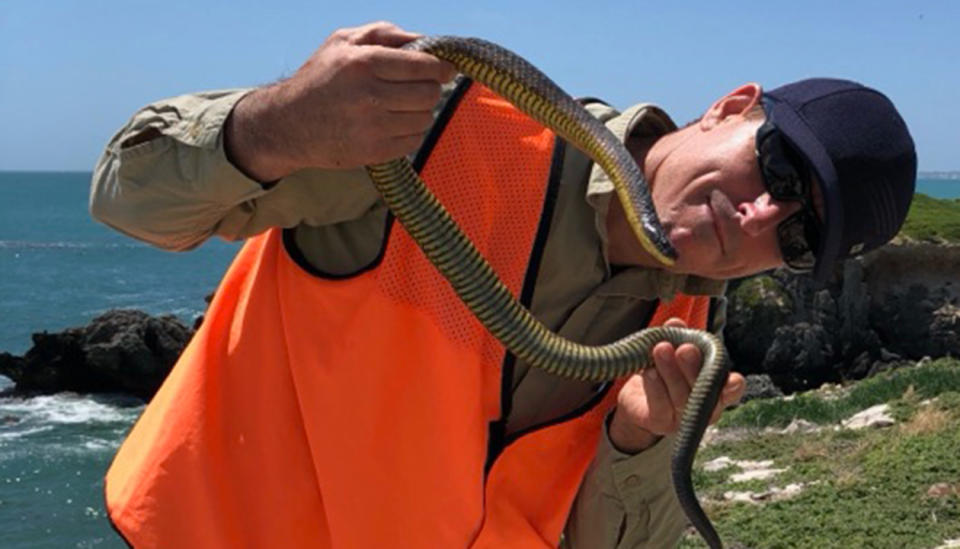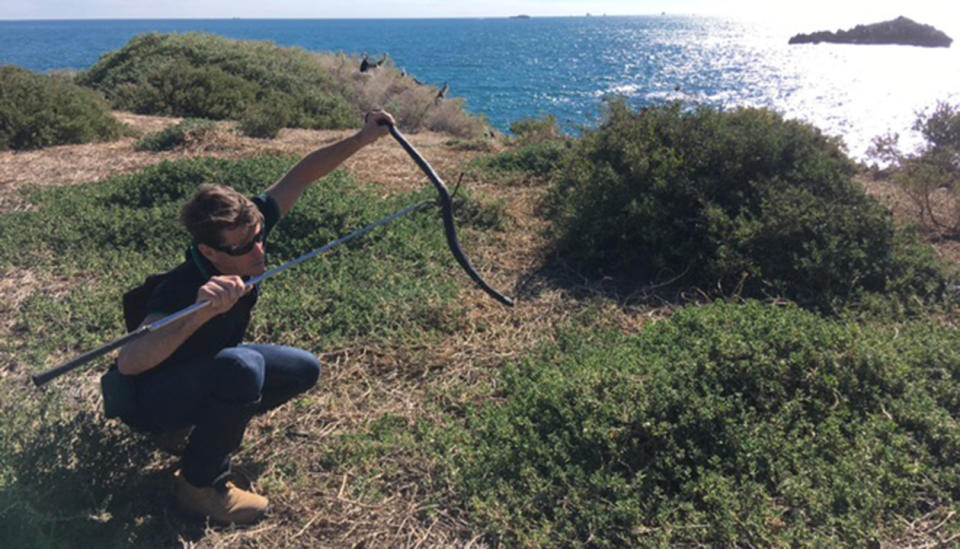The infested island where blind snakes have taken over
Most Australians have probably heard of Rottnest Island, famous for its celebrity quokka selfies, but many wouldn’t know another WA island despite a truly amazing claim to fame.
Carnac Island, which sits 10 kilometres off the coast of Fremantle, has one of the densest island populations of deadly tiger snakes in the world, many of which are blind.
The island, which is only about 19 hectares (47 acres) in size, has an adult population of about 400 snakes.
Theories as to how such a big population got onto such a tiny space – Rottnest Island is approximately 4700 acres in size in comparison- is something that biologist Dr Mitchell Ladyman has been fascinated by for years.


Dr Ladyman, principal biologist at environmental consultancy firm Animal Plant Mineral, told Yahoo 7 there were various reasons why so many snakes now reside on the island.
“There are no human inhabitants and no predators native to the island, so the tiger snake population has thrived,” he said.
“They live off a diet of freshwater and other animals – seagulls, mice, and skinks, to name a few.”
What makes the snake population even more unique is that the majority of the male adult snakes are blind because of seagull attacks from parent seagulls trying to protect their chicks.
But how the snakes got there in the first place is something of a mystery. Dr Ladyman says the most scientific reason is rising sea levels marooning the snakes on the island, or snakes swimming to Carnac from neighbouring Garden Island.
‘Was not expecting this’: Snake catcher’s surprise in ‘snake infested’ hut
Snake bite warning: Why you’re more likely to be bitten at home than in the bush
Another theory is that the snakes were attracted to the site after wells were dug by authorities in an attempt to make Carnac Island a quarantine site for colonists coming from Europe.
“These are people who got to the mainland, and if they showed any signs of being sick they were turned around and sent back to Carnac Island,” Dr Ladyman said.
But the most interesting theory is about a travelling snake charmer named Rocky Vane, who dumped his cache of 40 snakes on the island in the 1930s after his wife died of snakebite and the police began pursuing him for other apparent snake-related deaths.


“This guy had a record as long as your arm in the Eastern States for all sorts of weird and wonderful things like threatening people with snakes,” Dr Ladyman said.
“He lived in Fremantle and knew about Carnac, that it was tiny, that there was water there. He’d spent years grooming and growing this tiger snake population.
“He wasn’t just going to get rid of them.”
Dr Ladyman said being blind does not hinder the snakes’ ability to feed.
“The snakes don’t care, because they actually don’t need their eyes to find food. It’s their tongues that enable them to know where it is they’re going to strike.
“If you see a snake come up to a prey item, it uses its tongue to find it, but when it’s within a metre or so, the prey item has to move for the snake to see it and strike it.
“On Carnac, because there are so many seagull chicks, snakes just literally bump into their prey and eat them.”


